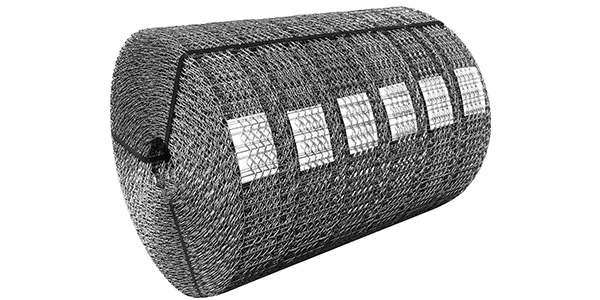- Industrial zone, South of Anping Town, Hengshui, Hebei, China.
- sales@hfpetromesh.com
- +86-18931809706
 Afrikaans
Afrikaans  Albanian
Albanian  Amharic
Amharic  Arabic
Arabic  Armenian
Armenian  Azerbaijani
Azerbaijani  Basque
Basque  Belarusian
Belarusian  Bengali
Bengali  Bosnian
Bosnian  Bulgarian
Bulgarian  Catalan
Catalan  Cebuano
Cebuano  Corsican
Corsican  Croatian
Croatian  Czech
Czech  Danish
Danish  Dutch
Dutch  English
English  Esperanto
Esperanto  Estonian
Estonian  Finnish
Finnish  French
French  Frisian
Frisian  Galician
Galician  Georgian
Georgian  German
German  Greek
Greek  Gujarati
Gujarati  Haitian Creole
Haitian Creole  hausa
hausa  hawaiian
hawaiian  Hebrew
Hebrew  Hindi
Hindi  Miao
Miao  Hungarian
Hungarian  Icelandic
Icelandic  igbo
igbo  Indonesian
Indonesian  irish
irish  Italian
Italian  Japanese
Japanese  Javanese
Javanese  Kannada
Kannada  kazakh
kazakh  Khmer
Khmer  Rwandese
Rwandese  Korean
Korean  Kurdish
Kurdish  Kyrgyz
Kyrgyz  Lao
Lao  Latin
Latin  Latvian
Latvian  Lithuanian
Lithuanian  Luxembourgish
Luxembourgish  Macedonian
Macedonian  Malgashi
Malgashi  Malay
Malay  Malayalam
Malayalam  Maltese
Maltese  Maori
Maori  Marathi
Marathi  Mongolian
Mongolian  Myanmar
Myanmar  Nepali
Nepali  Norwegian
Norwegian  Norwegian
Norwegian  Occitan
Occitan  Pashto
Pashto  Persian
Persian  Polish
Polish  Portuguese
Portuguese  Punjabi
Punjabi  Romanian
Romanian  Russian
Russian  Samoan
Samoan  Scottish Gaelic
Scottish Gaelic  Serbian
Serbian  Sesotho
Sesotho  Shona
Shona  Sindhi
Sindhi  Sinhala
Sinhala  Slovak
Slovak  Slovenian
Slovenian  Somali
Somali  Spanish
Spanish  Sundanese
Sundanese  Swahili
Swahili  Swedish
Swedish  Tagalog
Tagalog  Tajik
Tajik  Tamil
Tamil  Tatar
Tatar  Telugu
Telugu  Thai
Thai  Turkish
Turkish  Turkmen
Turkmen  Ukrainian
Ukrainian  Urdu
Urdu  Uighur
Uighur  Uzbek
Uzbek  Vietnamese
Vietnamese  Welsh
Welsh  Bantu
Bantu  Yiddish
Yiddish  Yoruba
Yoruba  Zulu
Zulu
- Afrikaans
- Albanian
- Amharic
- Arabic
- Armenian
- Azerbaijani
- Basque
- Belarusian
- Bengali
- Bosnian
- Bulgarian
- Catalan
- Cebuano
- Corsican
- Croatian
- Czech
- Danish
- Dutch
- English
- Esperanto
- Estonian
- Finnish
- French
- Frisian
- Galician
- Georgian
- German
- Greek
- Gujarati
- Haitian Creole
- hausa
- hawaiian
- Hebrew
- Hindi
- Miao
- Hungarian
- Icelandic
- igbo
- Indonesian
- irish
- Italian
- Japanese
- Javanese
- Kannada
- kazakh
- Khmer
- Rwandese
- Korean
- Kurdish
- Kyrgyz
- Lao
- Latin
- Latvian
- Lithuanian
- Luxembourgish
- Macedonian
- Malgashi
- Malay
- Malayalam
- Maltese
- Maori
- Marathi
- Mongolian
- Myanmar
- Nepali
- Norwegian
- Norwegian
- Occitan
- Pashto
- Persian
- Polish
- Portuguese
- Punjabi
- Romanian
- Russian
- Samoan
- Scottish Gaelic
- Serbian
- Sesotho
- Shona
- Sindhi
- Sinhala
- Slovak
- Slovenian
- Somali
- Spanish
- Sundanese
- Swahili
- Swedish
- Tagalog
- Tajik
- Tamil
- Tatar
- Telugu
- Thai
- Turkish
- Turkmen
- Ukrainian
- Urdu
- Uighur
- Uzbek
- Vietnamese
- Welsh
- Bantu
- Yiddish
- Yoruba
- Zulu
galvanised grid
Galvanised Grid An Innovative Solution for Modern Infrastructure
In the ever-evolving landscape of construction and infrastructure, the galvanised grid has emerged as a pivotal element, essential for enhancing both functionality and durability. This innovative material has found extensive applications across various sectors, including construction, transportation, and energy. Galvanisation, a process where steel is coated with a layer of zinc, provides a robust barrier against corrosion, effectively extending the lifespan of the materials and structures it protects.
One of the most notable features of a galvanised grid is its exceptional resistance to environmental elements. Structures exposed to harsh weather conditions, such as rain, salt, and humidity, can suffer from rapid corrosion if not adequately protected. The galvanised coating offers a protective layer that significantly reduces this risk, ensuring that buildings, bridges, and other infrastructures remain safe and functional over the years. This characteristic is particularly beneficial in coastal regions, where saltwater exposure is a significant concern.
In addition to its durability, the galvanised grid is designed for versatility. It can be fabricated into various shapes and sizes to suit specific project requirements. This adaptability makes it an ideal choice for a wide range of applications, from walkways and staircases to safety barriers and drain covers. Its lightweight yet strong composition allows for easy installation and maintenance, reducing labor costs and construction time.
galvanised grid

The aesthetic appeal of galvanised grids should not be overlooked, as they can also enhance the visual appeal of a project. With a sleek, modern finish, these grids can blend seamlessly into contemporary architectural designs. They can be used in both visible structures, such as outdoor staircases and platforms, as well as in more functional applications, such as ventilation and drainage systems. This duality makes them a popular choice among architects and engineers aiming to balance form and function.
Furthermore, the environmental benefits associated with galvanised grids are increasingly relevant in today’s eco-conscious climate. The galvanisation process is relatively low in environmental impact compared to other forms of metal coating. Moreover, the longevity of galvanised materials means that they do not need to be replaced as frequently, thereby reducing waste and conserving resources. Many galvanised products are also recyclable, contributing to a more sustainable construction approach.
In summary, the galvanised grid represents a significant advancement in infrastructure design and construction. Its exceptional durability, versatility, and aesthetic appeal make it a favored choice for a variety of applications, while its environmental benefits align with modern sustainability goals. As we continue to face challenges related to climate change and resource conservation, the adoption of galvanised grids across various industries is a step forward towards building a more resilient and sustainable future. With technology advancing and new methods of galvanisation being developed, the potential for this innovative material is boundless, promising even greater contributions to infrastructure development in the years to come.
-
Welded Steel Bar Grating: The Rugged Industrial Flooring Solution Built for Load and LongevityNewsJun.24,2025
-
Steel Walkway Grating: Reliable, Resilient, and Built for Every StepNewsJun.24,2025
-
Shale Shaker Screen for Sale: Optimize Drilling Efficiency with Precision Screening PowerNewsJun.24,2025
-
Shaker Screen for Sale: Elevate Your Drilling Efficiency with Durable Separation SolutionsNewsJun.24,2025
-
Press Locked Steel Grating: Industrial Strength with Precision Fit for Heavy-Duty ApplicationsNewsJun.24,2025
-
Perimeter Safety Netting: The Critical Safety Upgrade for Every HelipadNewsJun.24,2025